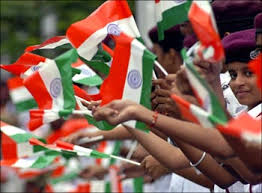United Nations, Jan 14: India's diaspora population is the largest in the world with 16 million people from India living outside their country in 2015, according to a latest UN survey on international migrant trends.
 The survey conducted by the UN Department of Economic and Social Affairs (DESA) said the number of international migrants - persons living in a country other than where they were born - reached 244 million in 2015 for the world as a whole, a 41 per cent increase compared to 2000.
The survey conducted by the UN Department of Economic and Social Affairs (DESA) said the number of international migrants - persons living in a country other than where they were born - reached 244 million in 2015 for the world as a whole, a 41 per cent increase compared to 2000.
The 2015 Revision, nearly two thirds of international migrants live in Europe (76 million) or Asia (75 million), according to the Trends in International Migrant Stock.
"The rise in the number of international migrants reflects the increasing importance of international migration, which has become an integral part of our economies and societies," said Wu Hongbo, UN Under-Secretary-General for Economic and Social Affairs.
"Well-managed migration brings important benefits to countries of origin and destination, as well as to migrants and their families," Hongbo added.
India has the largest diaspora in the world, followed by Mexico and Russia. In 2015, 16 million people from India were living outside of their country, a growth from 6.7 million in 1990, the survey stated.
Mexico's diaspora population stood at 12 million.Other countries with large diasporas included Russia, China, Bangladesh, Pakistan and Ukraine.
Of the twenty countries with the largest number of international migrants living abroad, 11 were in Asia, 6 in Europe, and one each in Africa, Latin America and the Caribbean and Northern America, the survey said.
This figure includes almost 20 million refugees.
The survey further said that in 2015, two thirds of all international migrants were living in only 20 countries, starting with the US, which hosted 19 per cent of all migrants at 46.6 million, followed by Germany, Russia, Saudi Arabia, the United Kingdom, and the United Arab Emirates.
India ranked 12th out of these 20 countries, hosting 5.2 million migrants in 2015, a drop from 7.5 million in 1990.
The UN data shows that the number of international migrants has grown faster than the world's population.
As a result, the share of migrants in the global population reached 3.3 per cent in 2015, up from 2.8 per cent in 2000.
Two out of three international migrants in 2015 lived in Europe or Asia, the survey said, adding that nearly half of all international migrants worldwide were born in Asia.
Among major regions of the world, Northern America hosts the third largest number of international migrants, followed by Africa, Latin America and the Caribbean and Oceania.
Between 2000 and 2015, Asia added more international migrants than any other major region, or a total of 26 million additional migrants.
The 2030 Agenda for Sustainable Development, adopted by world leaders last September at the United Nations, stresses the multidimensional reality of migration.
The Agenda calls on countries to implement planned and well-managed migration policies, eradicate human trafficking, respect the labour rights of migrant workers and reduce the transaction costs of migrant remittances.
The Agenda also highlights the vulnerability of migrants, refugees and IDPs and emphasises that forced displacement and related humanitarian crises threaten to reverse much of the development progress made in recent decades.
UN Deputy Secretary-General Jan Eliasson said migrants need to be protected.
"We need to take greater responsibility for protecting the lives of many thousands of migrants – men, women and children – who are compelled to undertake dangerous and sometimes fatal journeys," Eliasson said.
"Those forced to flee should never be denied safe haven or rescue. Migrants, as all people, deserve protection and empathy," Eliasson added.






Comments
Add new comment